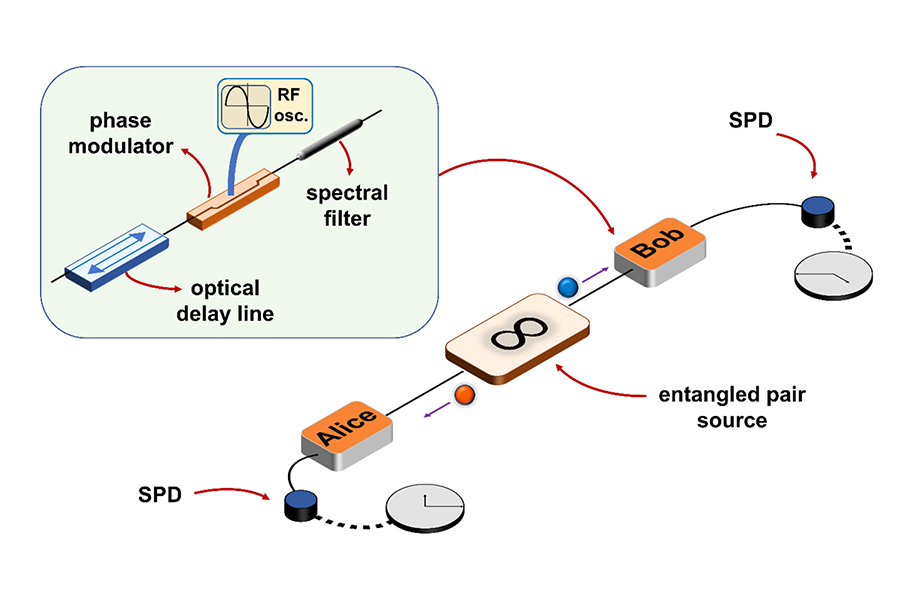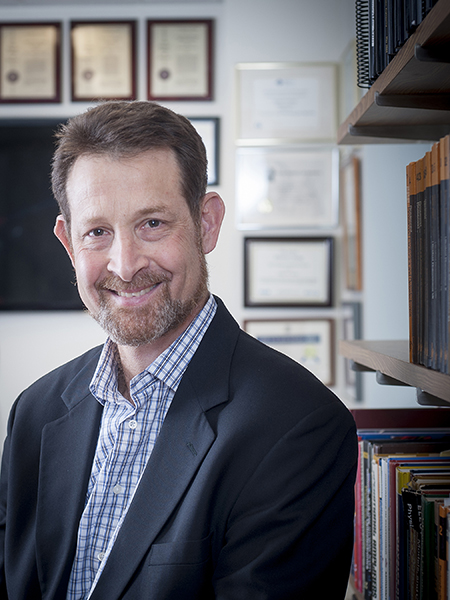Purdue ECE researchers develop technique for more precise ToF measurements

Researchers in Purdue University’s Elmore Family School of Electrical and Computer Engineering have developed a technique to make time-of-flight measurements (ToF) of entangled photons where the precision of the measurement dramatically exceeds the resolution of commercially available single-photon detectors.
The technique involves using two particles of light, or photons, which are entangled in time and frequency. Consequently, a measurement on one allows you to infer corresponding information about the other. For example, the arrival of one photon at a detector will be strongly correlated with the arrival of the other. The researchers measure the difference between the arrival times of these two photons in their experiments with femtosecond-scale precision.
The work is being done in the lab of Andrew M. Weiner, Scifres Family Distinguished Professor of ECE.
“Our scheme ensures that changes in the delay traveled by one of the photons relative to the other is mapped to something we can measure, that is the total number of joint detections of these photons, which is akin to measuring intensity in a classical context,” says Weiner. “The precision no longer depends on the detector resolution but instead on the modulation and frequency content of the entangled photons. The timing correlation in the entangled photons being 40 times narrower than the detector resolution is unearthed using the scheme.”
The ToF of photons is conventionally measured based on the conversion of photon arrival to an electrical impulse, which has limited resolution. This measurement is only as precise as the resolution permitted by the photodetectors and timing electronics. The method, demonstrated in a paper published in Optica, can perform equivalent measurements on entangled photons without relying on the detector resolution at all, meaning low-resolution detectors can still use this new method.

Suparna Seshadri, a Purdue ECE Ph.D. student on the team, says that by modulating the entangled photons faster than the resolution of single-photon detectors, they achieve better timing sensitivity.
“We use the current technology for fast and strong modulation to overcome the limitations from the detector resolution,” she says.
The researchers performed a coarse measurement of the ToF using low-resolution electrical signatures, or detection time tags, and complemented it with finer measurements using the scheme they demonstrated. While this technique has only been done in a lab setting thus far, the entangled photons should allow measurements to be done from locations that are far away from each other geographically.
In the future, Seshadri says they want to see how this technique can be applied to networks that will be able to realize the work being done by recent Nobel Prize winners. The 2022 Nobel Prize in Physics 2022 was awarded to Alain Aspect, John F. Clauser and Anton Zeilinger “for experiments with entangled photons, establishing the violation of Bell inequalities and pioneering quantum information science.” These results have cleared the way for new technology based upon quantum information. Seshadri says timing measurements will be crucial in these endeavors.
“When you distribute photons over a quantum network, you need to know when they reach a particular a user for operations such as those that rely on interference between multiple photons,” says Navin Lingaraju, a team member who is now a research scientist at SRI international. “The work being done at Purdue could aid those processes.”
Funding for this research comes from the National Science Foundation (NSF). The results appeared in an article in Optica entitled “Nonlocal subpicosecond delay metrology using spectral quantum interference.” Optica is the Optica Publishing Group’s journal for high-impact research.
